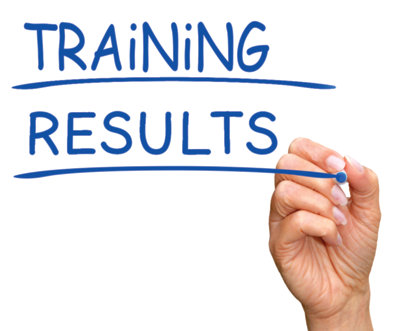
WORKING ‘ON’ YOUR BUSINESS, NOT JUST ‘IN’ IT
Before I dig into an article about how to work on your business instead of in it, I’d like to share a story with you. Once upon a time, my accountant had to prepare 102 W2s in a single year for my shop. We had so much turnover, dealt with so much chaos and were putting out so many fires that it was impossible for me to contemplate working “on” my business instead of “in” it.

Perhaps the worst part is feeling trapped in the cycle. Chaos in the shop means I spend my time putting out fires and not on improving systems; a lack of good processes and procedures leads to chaos in the shop.
So what’s the way out? How can we break the cycle?
I’ll come at this problem from two directions, but, truthfully, it comes back to a single principle: we have to focus on results instead of activity.
Activity Or Results From Marketing?
I mentioned my customer base earlier. At the same time I was preparing 102 W2s, my shop was doing 70 cars a day. My advertising was comprised of discounts and fine print, meaning that I was attracting the lowest-quality customer possible. Those 70 cars per day were averaging a ticket in the mid $100s. We were running ourselves ragged, trying to take care of customers who only wanted a cheap price. We couldn’t care for the few great customers we did have because we were so swamped.

I had settled for activity (a busy shop) over results (a successful shop).
If you’ve ever been in this situation (or even if you’re there now), you know that it’s not easy to pull out of this kind of nosedive. Even if you switch your marketing approach tomorrow, unless your staff can follow through on the promises you make in your new advertising, you’ll never keep those new, high-quality customers.
So, if it seems like I’m glossing over the marketing side of your shop, it’s because working on your business is in large part about focusing on results instead of activity when it comes to training and accountability in your shop.
Starting The Accountability Cycle
Pulling out of the nosedive called “102 W2s in a year” meant two things: hiring better people, and holding them accountable.
The former took setting aside my ego and realizing that we’d never grow if I was always the best at everything in the shop.

The latter took the Auto Profit Masters (APM) Accountability Cycle.
It wasn’t called that at the time, of course. At the time, it was just a way to make training stick. If you’re the one who is constantly asking your employees what they learned in a training class, or reminding them of their commitment to fixing a number they control, this APM Accountability Cycle is for you.
It all starts with the same question I’ve been asking: Are you focusing on activity or results?
If you assign a training class to an employee and hope they get something from it, they will probably listen to the class. Because the goal was to “listen to a class,” that training might last a week before things go back to life as usual.
But, what if you give them a deadline to complete it, hold them to it, have them report what they learned and the things they’re going to change immediately, and then hold them to that promise? That’s a focus on results, and it leads to a lasting change in your business.
It’s true whether you’re talking about sending them to a conference to learn about customer service, or simply holding them accountable for working on Parts Gross Profit Percentage in your morning meeting.
This is the APM Accountability Cycle, and even though it’s nothing more elaborate than focusing on results instead of activity, it’s the difference between working longer and longer hours at your shop hoping things get better…
…and actually fixing problems.
From there, working on your business only accelerates. From there, you can bring more and more numbers into focus and see them change. From there, it’s not a big leap to daily measurement, daily accountability and daily growth. There’s a lot to be said about the right software and applications, but, for now, we’ll stick to getting started working “on” your business.

Is Your Parachute Packed?
Does it really matter if you want to work in your business? What if you really enjoy being a part of the day-to-day, turning wrenches or advising customers?
The answer, of course, is that you should keep doing what you love. But I’d caution you to keep your eyes on the finish line: what is your exit plan?
It’s not even fully implemented yet, but we’ve already seen what the Affordable Care Act has done to the cost of owning a business in just four years. Whether because of legislation, a family emergency or simply sailing into the sunset, working on your business today means you can pull the ripcord down the road at a moment’s notice.
After all, what’s an exit strategy other than working on your business each day? Systematize operations; measure, manage and improve your important numbers; move toward remote management. The only part I haven’t already talked about is securing good legal counsel.
Ultimately, it comes down to your answer to this question: Are the next 10 years going to be easier or harder for you as a business owner? I know my answer, which is why I choose to focus on that exit strategy today. It’s why I choose to work on my business today.
The good news is that getting to a place where you can guide or direct the business without having to be physically on-site — or rather, to a place where you’re working on your business, whether or not you’re in your business — is just a matter of focusing on results instead of activity.
Doing this in marketing leads to better customers; doing this with employees leads to more effective training; and doing this with your numbers means security for your business both now and in the future when you’re ready to hit the eject button.
By Terry Keller, shop owner and president, Auto Profit Masters

